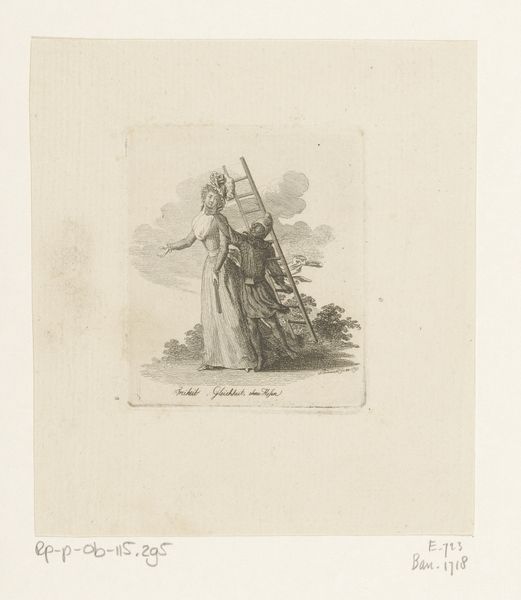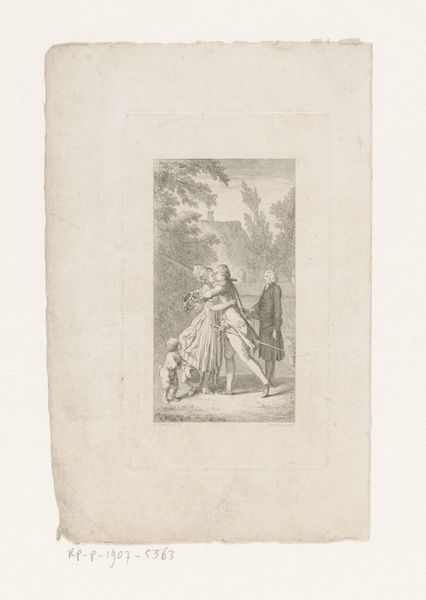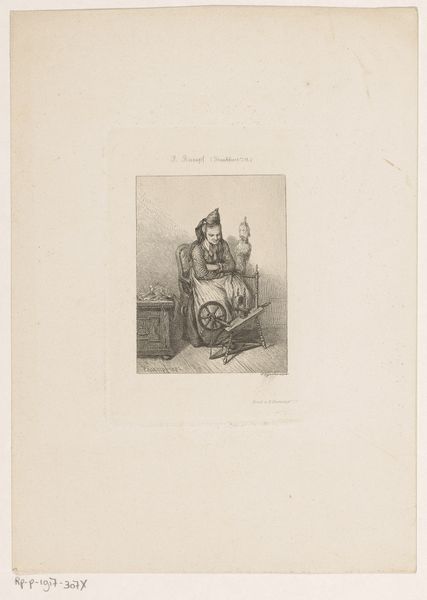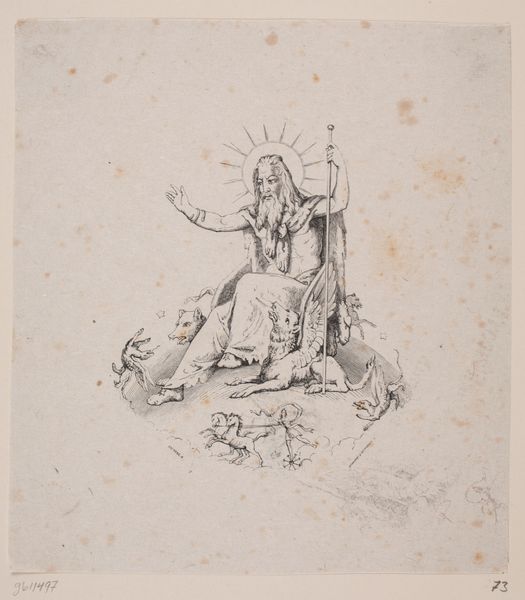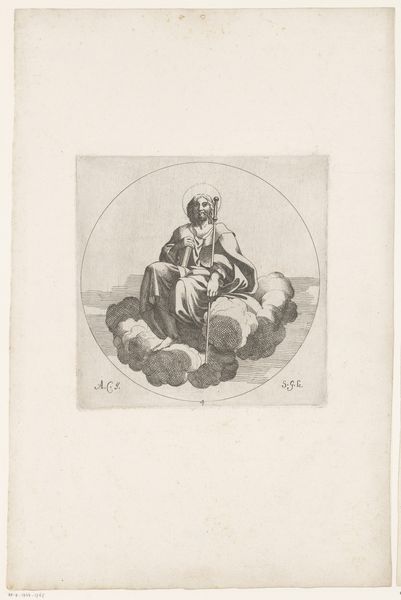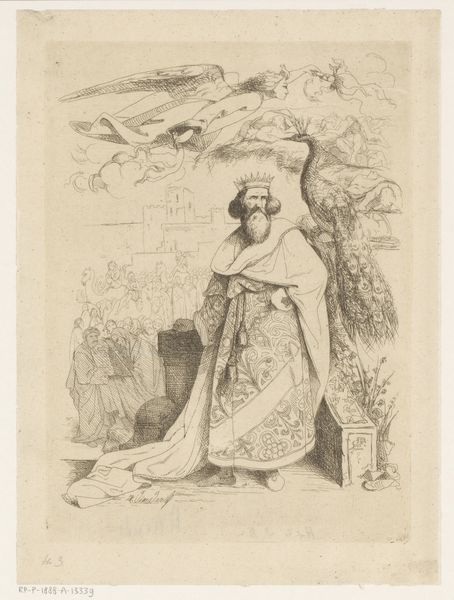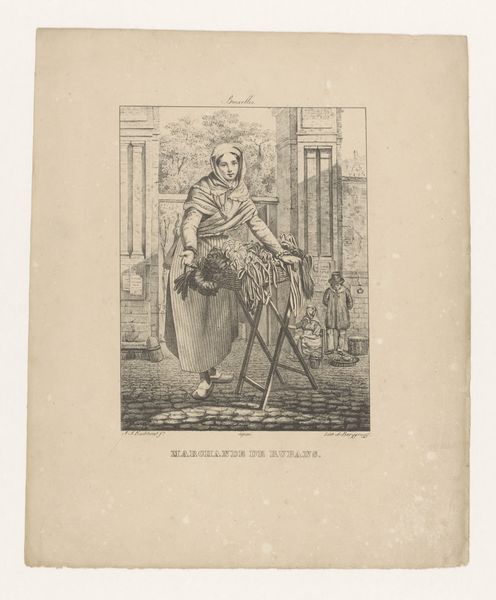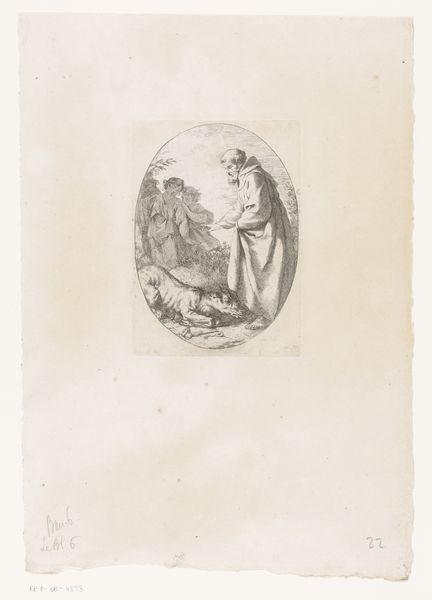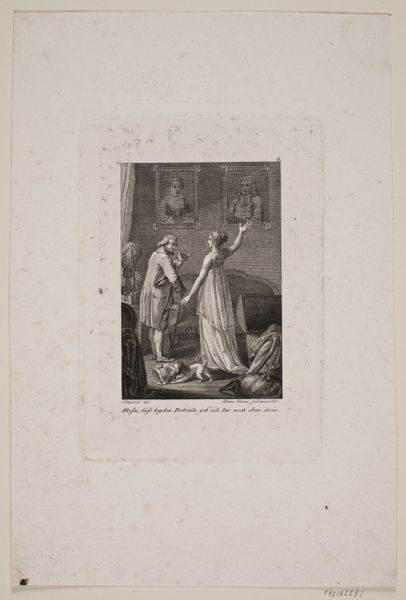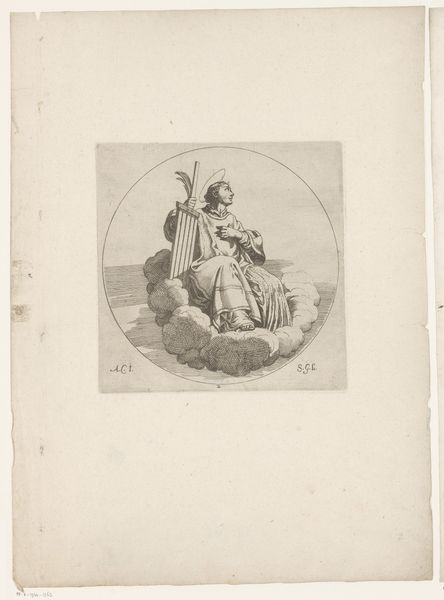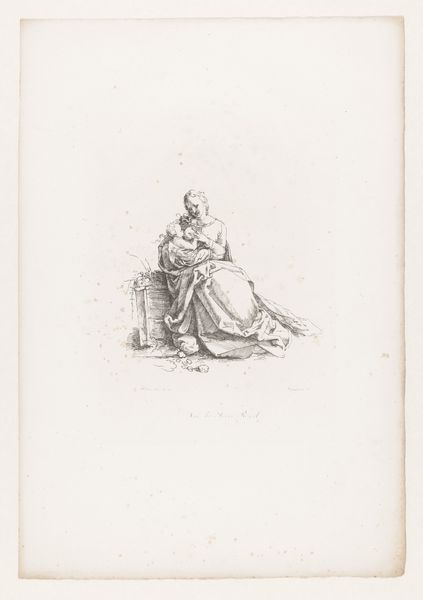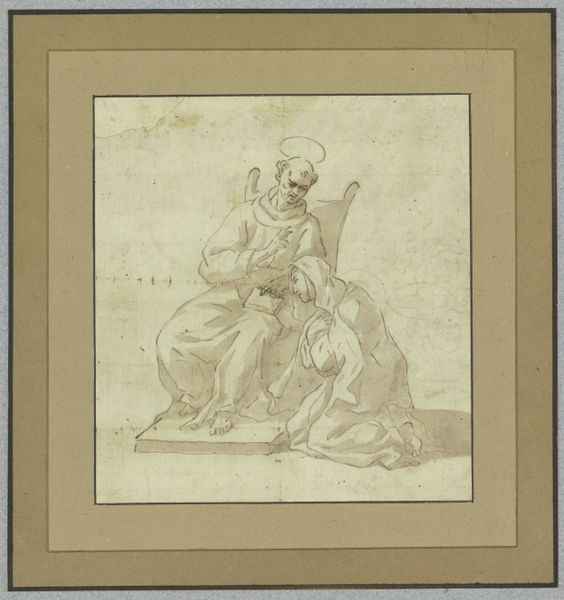
drawing, paper, pencil
#
drawing
#
allegory
#
pencil sketch
#
paper
#
pencil
#
history-painting
#
academic-art
#
watercolor
Dimensions: height 238 mm, width 164 mm
Copyright: Rijks Museum: Open Domain
Auguste Numans made this lithograph, "Koninklijke attributen" or "Royal Attributes," using a printmaking process rooted in the skillful manipulation of stone and ink. Lithography, a process developed in the late 18th century, allowed for a newfound fluidity of line. The artist would have drawn directly onto a smooth limestone surface with a greasy crayon, then chemically treating it so that ink would adhere only to the drawn areas. When pressed to paper, the design transfers, creating a print. The relatively simple materials belie the sophisticated technique required. The richness of tone and detail, especially in the depiction of the elaborate chair, flag, and armor, suggest Numans’ mastery of the medium. He coaxed subtle gradations and textures from the stone, creating the illusion of depth and dimension. Printmaking democratized image production in the 19th century, making art more accessible, but also raising questions about originality and artistic labor. The lithographic print exists as both a work of art and a commodity, blurring the lines between artistic creation and commercial production.
Comments
No comments
Be the first to comment and join the conversation on the ultimate creative platform.
